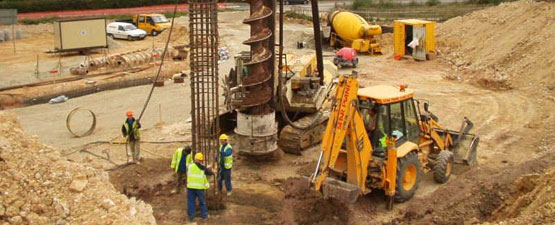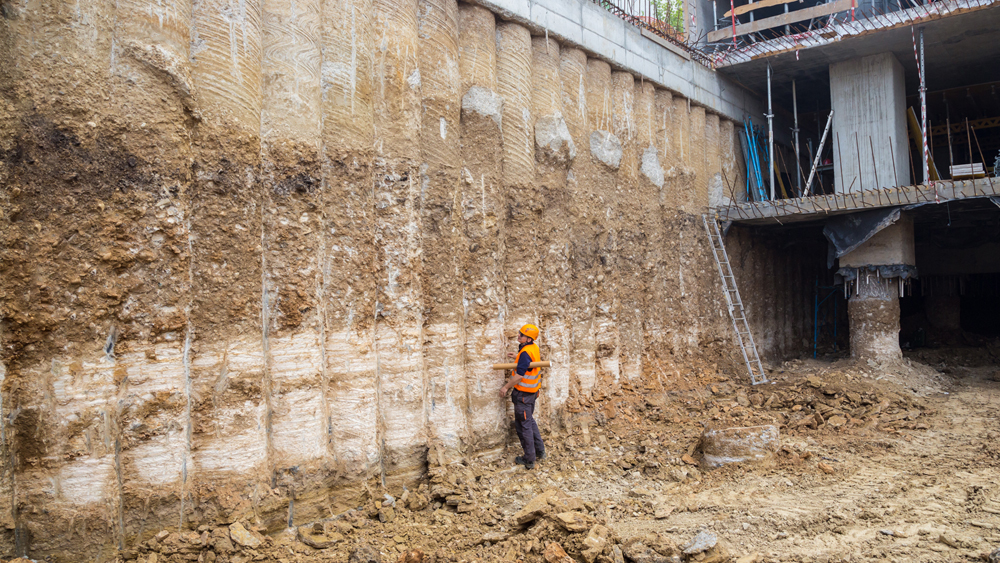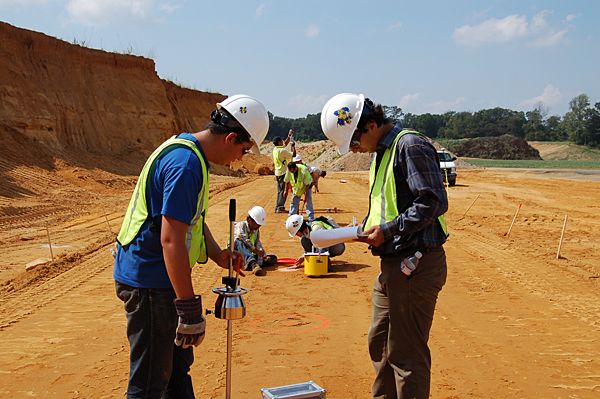Just How Consulting Engineers Enhance Geotechnical Design Projects: Insights Into Their Expertise, Methodologies, and Collaborative Approaches
Consulting designers are essential in enhancing geotechnical design jobs, applying their specialized expertise to browse the complexities of subsurface problems. Their methods encompass a variety of site examination strategies, including Requirement Infiltration Tests (SPT) and Cone Infiltration Tests (CPT), which educate vital choices throughout the design and building and construction stages. Additionally, their joint strategies foster communication amongst diverse job stakeholders, ultimately forming the task's trajectory. As we take a look at the complex duties these experts play, it comes to be clear that their contributions prolong past technical expertise, triggering a better take a look at the ramifications for task success.
Role of Consulting Engineers
The know-how of speaking with designers in geotechnical design is fundamental to the successful execution of building jobs. These specialists play a pivotal role in examining dirt and rock buildings, which are critical factors influencing design and building choices. By performing thorough site investigations, consulting engineers collect important data that educates the design procedure, making certain jobs are improved stable and ideal ground.
Consulting designers additionally supply important insights right into threat management (geotechnical geologist). They identify possible geotechnical hazards, such as landslides, soil liquefaction, and negotiation issues, making it possible for stakeholders to apply reliable reduction approaches. Their proficiency aids in enhancing structure layouts, which can lead to substantial price financial savings and improved safety
In addition, seeking advice from designers function as a vital web link between project owners, engineers, and service providers. Their capability to translate intricate geotechnical data into workable referrals cultivates collaboration and facilitates notified decision-making throughout the project lifecycle. This multidisciplinary strategy not only boosts project performance however additionally makes sure conformity with regulative standards and finest techniques.
Trick Approaches in Geotechnical Design

One primary methodology is site investigation, which entails performing area tests and laboratory analyses to gather information on subsurface problems. Methods such as Criterion Infiltration Screening (SPT) and Cone Infiltration Screening (CPT) are extensively utilized to review dirt stratigraphy and toughness. In addition, geophysical approaches, consisting of seismic and electric resistivity studies, supply non-invasive means to assess subsurface characteristics.
An additional crucial approach is mathematical modeling, which makes it possible for designers to imitate different situations and predict exactly how soil-structure communications will behave under various loading conditions. Limited Component Analysis (FEA) is a typical method employed in this context.
Moreover, the design of structures, preserving frameworks, and earthworks counts greatly on these methods - geotechnical geologist. By integrating advanced logical devices with field data, speaking with engineers can create customized services that address details job challenges, inevitably adding to the security and safety of construction jobs
Significance of Dirt Analysis
Soil evaluation functions as a fundamental aspect in geotechnical design, offering crucial insights right into the physical and chemical buildings of soil essential for effective building preparation. Understanding dirt characteristics is critical for identifying its load-bearing ability, drainage habits, and possibility for settlement or instability. Comprehensive dirt examinations, including tasting and laboratory testing, assistance recognize parameters such as soil type, wetness content, thickness, and shear strength.
These evaluations educate the selection of suitable building and construction techniques and products, ultimately influencing job safety and security and long life. Natural soils may need different foundation styles contrasted to granular dirts, requiring tailored engineering solutions. Furthermore, dirt analysis aids in identifying pollutants that could present risks to human wellness or the environment, permitting the growth of mitigation approaches.
Incorporating dirt evaluation into the onset of job advancement assists to reduce unexpected challenges, ensuring that engineers can anticipate and address possible problems before they rise. By developing a thorough understanding of the site conditions, seeking advice from engineers can maximize style effectiveness and reduce prices, thus enhancing the total success of geotechnical engineering projects.
Joint Techniques in Projects
Effective geotechnical projects often pivot on collective approaches that unite diverse experience from different disciplines. Efficient collaboration amongst getting in touch with designers, rock hounds, environmental researchers, and building professionals is critical for dealing with complicated challenges and maximizing project results. By leveraging the unique abilities and knowledge of each staff member, projects can profit from an alternative understanding of the website conditions, governing requirements, and design restraints.
Regular interaction and interdisciplinary meetings promote the sharing of insights and promote a society of teamwork. These collaborative efforts make it possible for the identification of potential risks early in the job lifecycle, permitting prompt reduction methods. In addition, including comments from stakeholders, consisting of local communities and governing agencies, guarantees that all perspectives are considered, enhancing project acceptance and conformity.
In addition, the assimilation of innovative modern technologies, such as Geographic Details Equipment (GIS) and Structure Details Modeling (BIM), more enhances partnership. These tools enable for the real-time sharing of data and visualization of geotechnical conditions, promoting educated decision-making. geotechnical geologist Inevitably, a joint strategy not just streamlines task implementation yet additionally lays the structure for ingenious services to intricate geotechnical design difficulties.
Influence On Job Outcomes

Consulting engineers use advanced methodologies such as threat assessment and anticipating modeling, which boost the accuracy of job forecasts. Their capability to incorporate innovative modern technologies, like geotechnical instrumentation and data analytics, better refines the style and building and construction processes. As an outcome, tasks experience improved effectiveness, lowered prices, and lessened delays.
In addition, cultivating efficient interaction and cooperation amongst employee enhances problem-solving abilities. When obstacles emerge, a joined front allows for quick identification of remedies, preventing potential setbacks. Inevitably, the collective efforts of consulting engineers add to greater top quality end results, making sure that jobs satisfy both regulatory criteria and customer assumptions.
Verdict
